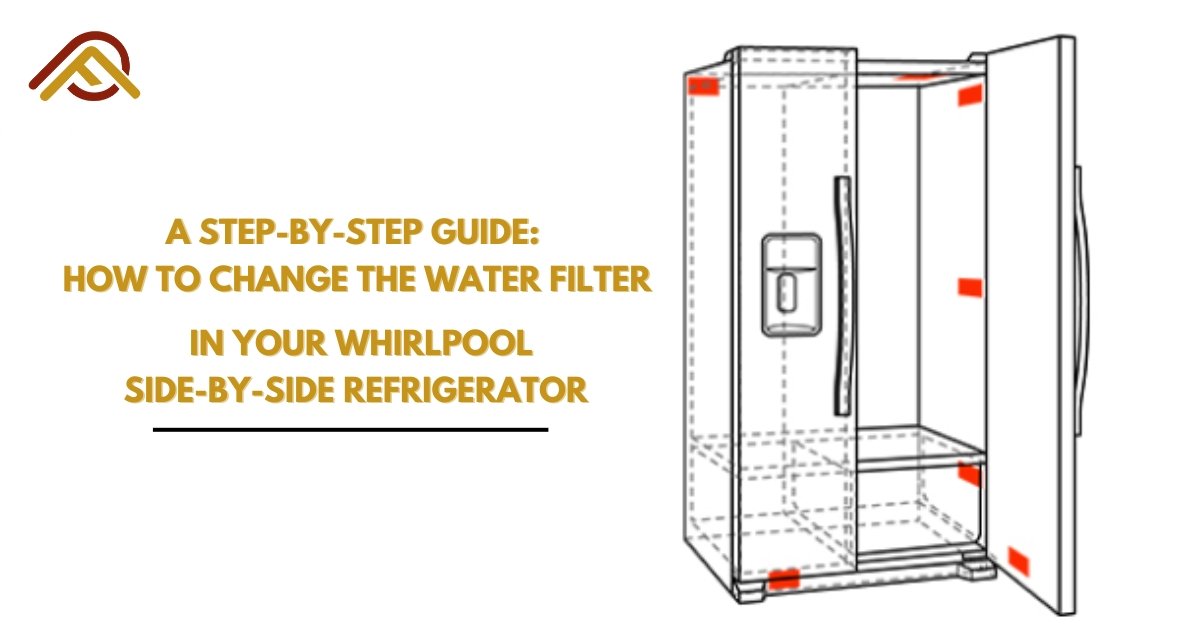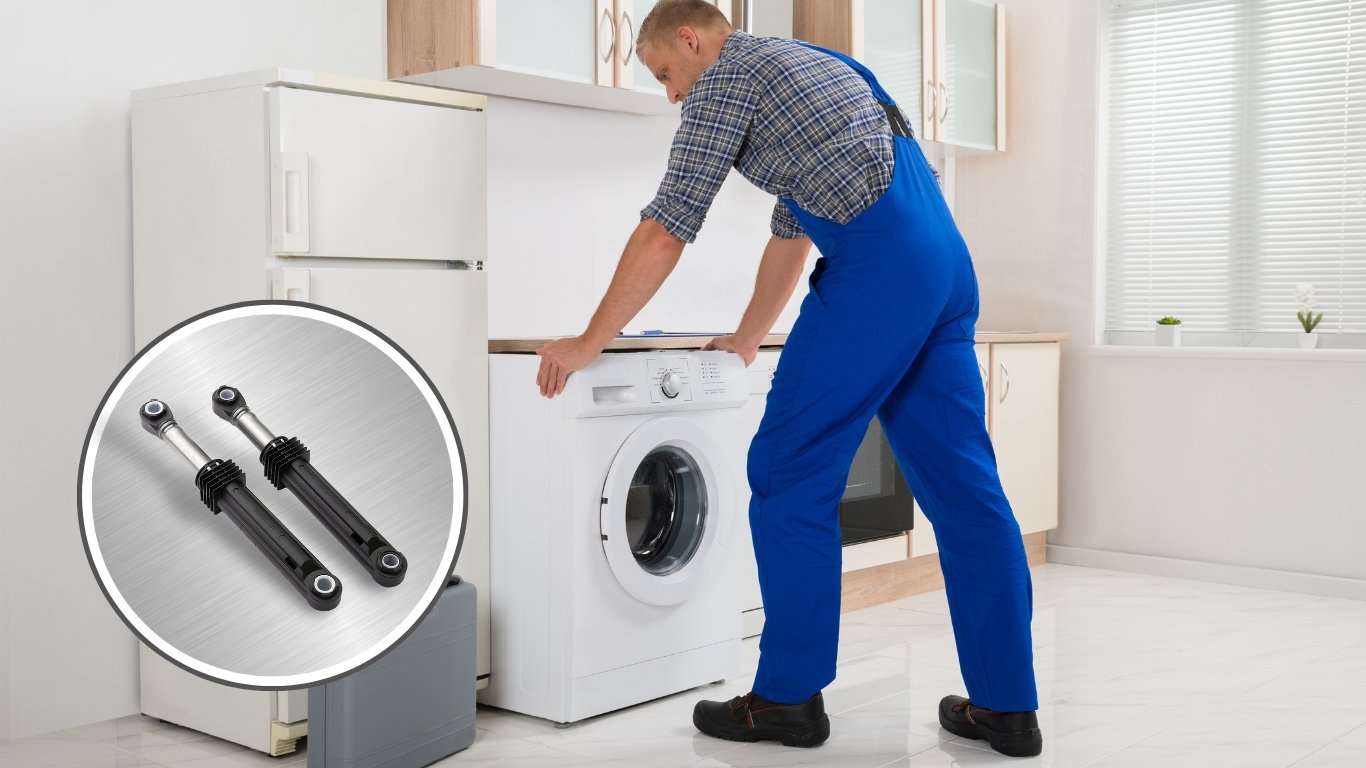
How to Identify When Your Refrigerator Filter Needs Replacing
, by Tanmoy Das, 9 min reading time
""Free Shipping on USA"" We do not provide any authorization invoice for amazon Resale.

, by Tanmoy Das, 9 min reading time
Your refrigerator water filter plays a critical role in keeping your family healthy. It helps remove impurities, contaminants, and unpleasant odors or tastes from your drinking water and ice. But like any filter, it has a lifespan. Over time, the filter becomes saturated with the very elements it's designed to block, making it less effective. Neglecting to replace your filter can lead to poor water quality, potential health risks, and even damage to your refrigerator's internal components. So how can you tell when it's time for a replacement? In this guide, we'll break down the key indicators, maintenance tips, and everything else you need to stay ahead of your refrigerator filter needs.
Timely refrigerator filter replacement is essential for maintaining clean, fresh, and safe drinking water. An expired filter loses its ability to capture contaminants, which can lead to the presence of harmful substances such as lead, chlorine, heavy metals, and bacteria in your water supply.

Aside from health concerns, an old filter can cause your water to taste or smell unpleasant and may even affect the performance of your appliance. Overused filters can clog, causing reduced water pressure and inefficient ice production. Replacing your filter regularly not only safeguards your health but also extends the lifespan of your refrigerator.
1. Unpleasant Taste in Water or Ice
If your filtered water suddenly develops a metallic, bitter, or chemical taste, it's likely your filter is no longer removing impurities effectively. This is one of the first and most noticeable signs that it's time to replace the filter. As the activated carbon inside becomes saturated, it stops absorbing contaminants, which are then passed directly into your water.
2. Foul Odor
Water or ice with a musty or sulfur-like smell is often the result of bacterial growth in a worn-out filter. These odors can make drinking water unappetizing and can even affect food stored with ice. A fresh filter eliminates these organic compounds, restoring your water to a clean, neutral state.
3. Slow Water Dispensing
A clean filter maintains a steady flow of water. If your refrigerator's water dispenser has slowed down significantly, it's a strong indication that the filter is clogged with debris. Reduced flow can also stress the refrigerator's internal plumbing, potentially leading to leaks or other issues over time.
4. Small or Hollow Ice Cubes
When the water supply is restricted due to a clogged filter, your ice maker may not be able to fill its mold appropriately. This results in smaller or partially formed ice cubes. Not only is this inconvenient, but it also signals that your appliance is not operating efficiently.
5. Filter Change Indicator Light Is On
Modern refrigerators come with a filter indicator light that signals when it's time for a replacement. This feature is programmed based on usage or time elapsed, usually every 6 months. If your light turns on, don't ignore it. It's a reliable prompt that your filter's effectiveness is waning.
6. Cloudy or Discolored Water
Healthy filtered water should appear clear. If your water is cloudy or contains visible particles, it likely means the filter is saturated with sediment and no longer functioning correctly. Cloudy water can also be a sign of bacterial growth or chemical imbalance.
7. Increased Chlorine Taste or Smell
Most filters are designed to reduce chlorine, a chemical commonly found in tap water. If the familiar pool-like taste or smell returns, it's a sign the filter is no longer neutralizing chlorine. Prolonged exposure to chlorine can dry out skin and affect sensitive individuals.
8. Longer Than 6 Months Since Last Change
Even if your water seems fine, going beyond the manufacturer-recommended timeframe (typically 6 months) is not advisable. Filters degrade with time, even under minimal usage. Set a reminder or mark your calendar to replace it every six months to ensure continuous protection.
9. Visible Mold or Slime
If you remove the filter and notice a slimy coating or black spots, this could indicate mold buildup. This situation requires immediate action to dispose of the filter and sanitize the housing to prevent contamination of your water system.
10. Inconsistent Ice Production
A drop in ice output or random halts in production could indicate that the water supply to your ice maker is compromised. A clogged filter restricts water flow, which disrupts the ice-making cycle and affects your refrigerator's performance.

Water quality varies depending on location. If your household uses well water or has known issues with hard water or high sediment levels, your filter may become clogged faster. In such cases, consider replacing your refrigerator filter every 3 to 4 months instead of the standard 6-month recommendation. Regular water testing can also help determine if your filtration needs are above average.
Replacing your refrigerator filter is a straightforward process that can be done in just a few minutes. Here's a step-by-step overview:
Step 1: Identify Your Filter Type
Filters are typically located in one of three places: the upper right corner inside the fridge, behind the base grille, or at the back of the appliance. Refer to your refrigerator's user manual or check the current filter model number to ensure you purchase the correct replacement.
Step 2: Turn Off the Water Supply (if needed)
Some refrigerator models require turning off the water supply to prevent leaks during filter replacement. Others are designed to allow filter changes while the water remains on.
Step 3: Remove the Old Filter
Depending on your model, you may need to twist, press a release button, or pull the filter out. Be cautious of water drips when removing the old unit.
Step 4: Install the New Filter
Please insert the new filter, aligning it properly with the connector. Twist or push it into place until it locks or clicks. Ensure it's firmly secured to avoid water leaks.
Step 5: Flush the New Filter
Run 2 to 3 gallons of water through the new filter to flush out any air and carbon particles. This step is crucial for ensuring optimal filter performance and water taste.
Step 6: Reset the Filter Indicator Light
If your fridge has an indicator light, reset it according to your user manual. This usually involves pressing and holding a button for a few seconds.
The general rule of thumb is every 6 months, but this can vary by brand and usage. Below is a quick reference guide:
|
Brand |
Recommended Change Interval |
|
Kenmore |
Every 6 months |
|
Frigidaire |
Every 6 months |
|
Samsung |
Every 6 months or 300 gallons |
|
Whirlpool |
Every 6 months or 200 gallons |
|
GE |
Every 6 months |
|
LG |
Every 6 months |
|
Bosch |
Every 6 months |
Pro tip: Use a calendar reminder or a smart home device to alert you when it's time for a change.
Ignoring filter replacement can have serious consequences. You risk consuming unfiltered water containing sediment, chemicals, and bacteria, all of which can impact your health. Additionally, neglected filters can cause mechanical issues within your fridge, such as clogged lines and reduced water pressure. Over time, this wear and tear may lead to costly repairs or even void your appliance warranty. Replacing a filter costs far less than fixing a damaged water line or compressor.
Q: Can I run my refrigerator without a filter?
Some refrigerators allow bypassing the filter, but you'll be drinking unfiltered tap water. This defeats the purpose of owning a filtered appliance.
Q: Are third-party filters safe to use?
Yes, as long as they are NSF-certified and compatible with your refrigerator model. Always read reviews and check certifications before purchase.
Q: How do I know which filter I need?
Check your current filter's model number or refer to your refrigerator's user manual. Alternatively, search your fridge model online for compatible filters.
Q: Do new refrigerators come with filters installed?
Most do, but it's essential to verify. If you're setting up a new fridge, double-check that the filter is in place and ready to go.
Recognizing when your refrigerator filter needs replacing is essential for maintaining the quality of your water and the efficiency of your appliance. Regular replacements help you avoid health risks, unpleasant tastes and smells, and costly maintenance issues. With proper awareness and a simple schedule, you can ensure your fridge runs smoothly and your water stays pure.
Visit our Filter Shop for genuine, NSF-certified refrigerator filters. We carry trusted models for Frigidaire, Kenmore, Sub-zero, GE and more. Enjoy:
Don't wait for the signs. Stay ahead of the curve and replace your filter today.
Still have questions? Contact us — Our support team is here to help you find the perfect filter for your home and lifestyle.



